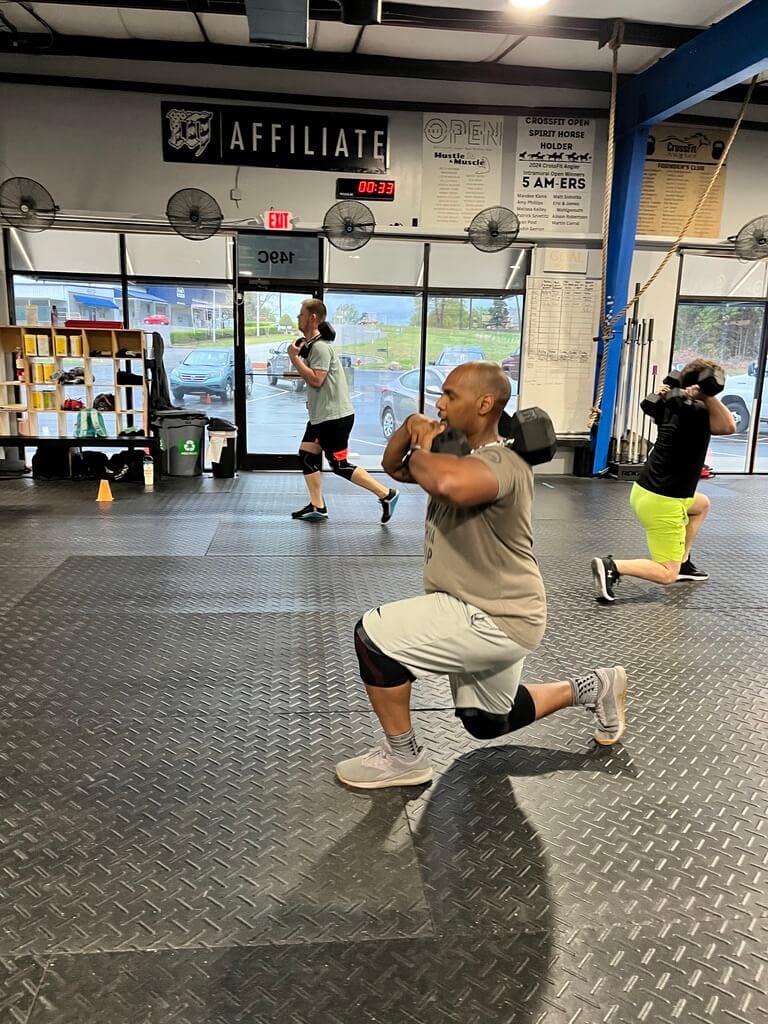Table of Contents
Introduction
Muscle soreness recovery is crucial for athletes and fitness enthusiasts looking to maintain and enhance their performance. In this comprehensive guide, we delve into the most effective strategies and techniques to manage and alleviate muscle soreness. Learn how targeted activities, therapeutic approaches, and smart nutrition can play pivotal roles in your recovery process.”
Key Strategies for Effective Muscle Soreness Recovery
Muscle soreness develops due to microtraumas in the muscle fibers caused during physical activities, especially those involving eccentric exercises (where muscles lengthen under tension). This can include activities like downhill running, weight training, and high-intensity interval training. These microscopic injuries trigger an inflammatory response, leading to symptoms such as stiffness, swelling, and a temporary increase in muscle tenderness.
The Science Behind Muscle Soreness
Researchers like Nosaka and Clarkson have shown that these micro-injuries result in a cascade of physiological responses designed to repair and strengthen the muscle fibers. Symptoms typically begin 12 to 24 hours after exercise and can peak between 24 to 72 hours post-exercise. Understanding the causes and symptoms of DOMS is crucial for anyone engaged in regular physical activities.
How Muscle Soreness Affects Your Training
DOMS can significantly impact your ability to perform at optimal levels. It leads to a temporary decrease in joint torque, muscle contraction speed, and overall power output, which can affect your performance metrics. However, muscle soreness is not just a sign of recovery but also a remodeling process that enhances muscle resilience and strength over time.
Managing Muscle Soreness Through Effective Training Modifications
Muscle soreness, or Delayed Onset Muscle Soreness (DOMS), while a sign of your body’s adaptation to new or intense physical activities, can also be a significant hindrance to your training routine if not managed properly. Here are detailed strategies and insights into managing muscle soreness through thoughtful training modifications. These approaches aim to balance active recovery with continued training to maintain fitness progress without exacerbating muscle damage.
1. Reducing Exercise Intensity
One of the most effective ways to continue training while managing DOMS is to reduce the intensity of your workouts. By adjusting the weights, lowering the number of sets or repetitions, or decreasing the overall speed and explosive movements in your routine, you can still engage in productive exercise that supports muscle conditioning and endurance without overstressing the already sore muscles. This method allows the muscles to engage in a reparative process, leveraging light activity to enhance blood flow which is crucial for delivering nutrients needed for muscle repair.
2. Varying Muscle Groups
To avoid overloading the affected muscles, it’s beneficial to alternate the focus of your workouts. If your lower body is experiencing soreness, shift your training emphasis to the upper body and vice versa. This strategy not only prevents further strain on the sore muscles but also helps in maintaining an overall balanced fitness routine. Incorporating exercises that target different muscle groups ensures that you continue to build strength and endurance across your entire body while giving the sore muscles time to recover.
3. Incorporating Stretching and Flexibility Work
Incorporating more dynamic or static stretching into your routine can play a crucial role in managing DOMS. While stretching has not been proven to prevent muscle soreness, gentle stretching exercises can improve flexibility and enhance blood flow to the sore muscles, thereby alleviating some symptoms of DOMS. Activities such as yoga or Pilates can be particularly effective as they focus on slow, controlled movements that improve overall body awareness, flexibility, and circulation.
4. Warm-Up and Cool-Down Exercises
A proper warm-up before starting an intense workout is crucial. Warm-up exercises increase muscle temperature, enhance blood flow, and prepare the muscles for the stress of the workout, which can help reduce the severity of muscle soreness post-exercise. Likewise, cooling down after a workout helps to gradually reduce the heart rate and blood pressure, and it aids in the removal of waste products from the muscles, which can accumulate and contribute to soreness.
5. Gradual Progression in Workout Routines
When planning workout routines, especially for beginners or those increasing their workout intensity, it is crucial to follow a gradual progression. Sudden increases in workout volume or intensity can lead to significant muscle soreness and increase the risk of injury. By progressively increasing the demands on your body, you allow your muscles to adapt to new stresses, reducing the likelihood and severity of DOMS.
6. Listening to Your Body
Understanding the difference between good soreness and potentially harmful pain is crucial. If the soreness significantly affects your mobility or lasts for more than a few days, it might indicate excessive strain or the onset of an injury. Listening to your body and adjusting your training accordingly is essential to prevent further damage and ensure long-term fitness and health.
7. Scheduled Rest Days
Incorporating scheduled rest days into your workout regimen is essential for muscle recovery. Rest days allow muscles that are sore from intense or new exercises to repair and strengthen. During rest days, light activities such as walking or leisure swimming can also serve as active recovery—these activities stimulate blood flow to the muscles without placing additional strain on them.
Recovery Techniques to Alleviate Muscle Soreness

Effective recovery is essential for anyone involved in regular physical activity or high-intensity training. Implementing a variety of recovery techniques can help alleviate muscle soreness and prepare the body for future exertions. Here’s a deeper look into some of the most effective recovery methodologies:
Active Recovery
Active recovery involves engaging in low to moderate-intensity exercise during the recovery phase. Activities such as walking, cycling, and swimming are excellent for active recovery as they stimulate circulation without placing undue stress on the muscles. Enhanced blood flow is crucial as it delivers oxygen and nutrients needed for muscle repair and flushes out waste products, such as lactic acid, that can contribute to muscle soreness. Incorporating active recovery days into your training schedule can help maintain mobility and reduce the duration of muscle soreness, making it easier to adhere to your fitness regimen consistently.
Implementing Massage Therapy in Your Muscle Soreness Recovery Plan
Massage therapy is another effective technique for managing DOMS and enhancing muscle recovery. Through various massage techniques, such as deep tissue or Swedish massage, therapists can help reduce muscle tightness, decrease inflammation, and increase blood flow to affected areas. This can lead to a reduction in muscle discomfort and an improvement in range of motion after intense workouts. While individual responses to massage can vary, regular massage sessions are widely regarded as beneficial for both immediate relief and long-term muscle health. Furthermore, massage therapy can also have psychological benefits, such as reducing stress and improving mood, which are vital components of overall recovery.
Cold and Heat Therapies
Applying cold therapy, such as ice packs or ice baths, immediately after a workout can significantly reduce inflammation and numb sore muscles, providing immediate relief from pain. Cold therapy constricts blood vessels, which can help decrease swelling and tissue breakdown. Once the initial inflammation has subsided, heat therapy can be introduced to promote blood flow and aid muscle relaxation. Heat applications, including heating pads, warm baths, or even steam therapy, can help relax and loosen tissues and stimulate blood flow to the muscles, which is beneficial for healing and increasing flexibility. Using a combination of both therapies can be particularly effective for managing DOMS and speeding up recovery.
Nutritional Support
Nutrition plays a critical role in muscle recovery and managing soreness. Consuming a balanced diet rich in proteins, essential fatty acids, and antioxidants can significantly influence recovery rates. Proteins are the building blocks of muscle repair; after intense training, consuming protein-rich foods or supplements can help repair muscle fibers. Foods high in omega-3 fatty acids, like fish, walnuts, and flaxseeds, have anti-inflammatory properties that can reduce muscular inflammation and soreness. Additionally, incorporating antioxidant-rich foods such as berries, dark leafy greens, and cherries into your diet can help neutralize free radicals produced during exercise, thereby reducing muscle damage and soreness.
Hydration
Maintaining adequate hydration is also critical for effective recovery. Dehydration can exacerbate muscle soreness and negatively affect muscle function. Ensuring that you drink sufficient fluids before, during, and after exercise can help maintain optimal muscle function, support recovery processes, and decrease the likelihood of muscle cramps and soreness.
Sleep and Rest
Sleep is perhaps one of the most underrated aspects of recovery. Quality sleep supports physiological muscle repair and helps modulate pain perception associated with DOMS. During sleep, the body produces growth hormone, which is essential for tissue growth and repair. Ensuring you get at least 7-9 hours of quality sleep per night can vastly improve recovery times and enhance overall performance.
Conclusion on Recovery Techniques
By integrating these recovery techniques into your routine, you can effectively manage muscle soreness and accelerate your return to peak performance. Whether through active recovery, therapeutic interventions, or nutritional and hydration strategies, each method offers unique benefits that can help minimize the impact of DOMS and enhance your overall training outcomes.
Call to Action
Struggling with recovery and muscle soreness? EliteBio is here to help with advanced recovery solutions tailored to your unique needs. Contact us today to learn more about how our services can enhance your recovery and help you get back to your best performance faster. Visit our website or call us to schedule a consultation and start your journey to faster and more effective recovery!
By expanding the recovery section to detail various techniques and their benefits, readers can gain a comprehensive understanding of how to manage muscle soreness effectively. This ensures they are equipped with the knowledge to not only alleviate symptoms but also to optimize their recovery processes for better performance and health.
Practical Applications and Case Studies
Real-world examples from athletes who have successfully integrated these strategies show that a balanced approach to training modifications and recovery techniques can manage muscle soreness effectively while maintaining high performance levels.
Conclusion
Muscle soreness is an inevitable part of an active lifestyle, particularly as you push your physical boundaries. While it can temporarily hinder performance, understanding its mechanisms and effectively managing your training and recovery can minimize disruptions to your fitness routine. Listening to your body and responding with appropriate training modifications and recovery techniques are essential for long-term athletic development and health.
For more information check us out at Crossfitangier.com
References
- Nosaka, K., & Clarkson, P. M. (1996). Changes in indicators of inflammation after eccentric exercise of the elbow flexors. Medicine and Science in Sports and Exercise, 28(8), 953-961.
- Cheung, K., Hume, P. A., & Maxwell, L. (2003). Delayed onset muscle soreness: Treatment strategies and performance factors. Sports Medicine, 33(2), 145-164.
- Byrne, C., Twist, C., & Eston, R. (2004). Neuromuscular function after exercise-induced muscle damage: Theoretical and applied implications. Sports Medicine, 34(1), 49-69.
- Howatson, G., & van Someren, K. A. (2008). The prevention and treatment of exercise-induced muscle damage. Sports Medicine, 38(6), 483-503.
- Andersen, L. L., Jay, K., & Andersen, C. H. (2005). Acute effects of massage or active exercise in relieving muscle soreness: Randomized controlled trial. Journal of Strength and Conditioning Research, 27(12), 3352-3359.
- Sports Medicine (2005). Adaptations to anaerobic training programs. In Essentials of Strength Training and Conditioning (3rd ed., pp. 94-113). National Strength and Conditioning Association.
- Dupuy, O., Douzi, W., Theurot, D., Bosquet, L., & Dugué, B. (2018). An evidence-based approach for choosing post-exercise recovery techniques to reduce markers of muscle damage, soreness, fatigue, and inflammation: A systematic review with meta-analysis. Frontiers in Physiology, 9, 403.
- ational Institutes of Health (NIH)
- Mayo Clinic
- American Council on Exercise (ACE)



